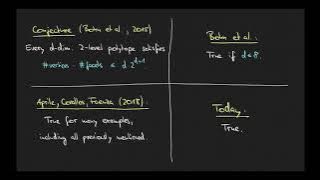Uniform 2 k1 polytope
In geometry, 2k1 polytope is a uniform polytope in n dimensions (n = k+4) constructed from the En Coxeter group. The family was named by their Coxeter symbol as 2k1 by its bifurcating Coxeter-Dynkin diagram, with a single ring on the end of the 2-node sequence. It can be named by an extended Schläfli symbol {3,3,3k,1}. (Wikipedia).



















